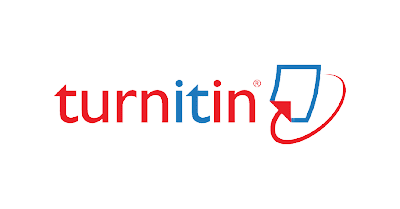PENGARUH KELEKATAN ORANG TUA TERHADAP PERILAKU PROSOSIAL DAN EMPATI SEBAGAI VARIABEL MEDIASI PADA SISWA DI MTS DARUL FALAH SUMBERGEMPOL TULUNGAGUNG
Abstract
Remaja sebagai fase dalam meningkatkan kebutuhan prososial. Remaja diharapkan dapat berkembang kepribadiannya sesuai dengan nilai etika dan moral. Namun, pada kenyataannya di Indonesia mengalami perubahan sosial yang berkembang pesat menjadi masyarakat modern yang telah berubah pula norma-norma, nilai dan gaya hidupnya. Remaja yang terjaga dengan ketat oleh tradisi, nilai tradisional telah mengalami pengikisan yang disebabkan era industrialisasi yang kian cepat. Peneliti merasa penting untuk mengetahui salah satu penyebab remaja mempunyai perilaku prososial yang dipengaruhi oleh kelekatan orang tua, hal ini karena empati membuat anak mampu menghargai orang lain dan mengimplementasikannya dengan perilaku prososial. Tujuan dari penelitian ini untuk mengetahui pengaruh kelekatan orang tua terhadap prososial dan empati sebagai variabel mediasi. Penelitian ini menggunakan pendekatan kuantitatif. Subjek yang digunakan adalah Siswa MTs Darul Falah Sumbergempol Tulungagung sebanyak 100 responden. Analisa data untuk menguji hipotesa menggunakan analisis model Hayes dengan bantuan SPSS versi 22.00 yang sudah diinstal dengan process macro. Hasil penelitiannya menunjukkan bahwa 1) Terdapat pengaruh secara langsung kelekatan orang tua terhadap empati, artinya semakin tinggi kelekatan orang tua semakin tinggi pula empati yang dibuktikan dari nilai signifikansi 0,000 < 0,05. 2) Terdapat pengaruh secara langsung empati terhadap prososial artinya semakin tinggi empati, maka semakin tinggi pula prososial yang dibuktikan dari nilai signifikansi 0,000 < 0,05. 3) Empati tidak memediasi pengaruh kelekatan orang tua terhadap perilaku prososial dibuktikan dari hasil analisis int_1 memiliki p-value sebesar 0,2122 > 0,05
Downloads
References
Appleyard K., Berlin L.J. 2007. Supporting Healthy Relationships Between Young Children and Their Parents. http://www.childandfamilypolicy.duke.edu/pdfs/pubpres/SupportingHealthyRelationships.pdf
Armsden, Gay. G and Greenberg, Mark. T. (1983). The inventoryof parent and peer attachment: individual differences and their relationship to psychological well-being in adolescence. Paper at the Annual Meeting of The Western Psychological Association (63rd, San Fransisco, California).
Baron, R. A dan Donn Byrne. (2003). Psikologi Sosial. Jakarta: Erlangga.
Baron, R.A. dan Byrne, D. (2005). Psikologi Sosial. Jakarta: Erlangga.
Crain, William. (2007). Teori Perkembangan. Yogyakarta: Pustaka Pelajar.
Browne, Erin (2010). The Relationship between Empathy in Children and their Parents, San Luis Obispo: Psychology and Child Development Department College of Liberal Arts California Polytechnic State University
Eisenberg, N. & Morris, A.S., 2011. The origin and social significance of emphaty-related responding. A review of empthaty and moral development: implication for caring and justice by M.L. Hoffman. Social Justice Reseach, 14, 95-120. Doi: 0885-7466/01/0300-0095/0.
Eisenberg, N., & Lennon, R. (1983). Sex differences in empathy and related capacities. Psychological Bulletin, 94(1), 100-131. doi: 10.1037/0033- 2909.94.1.100
Fraenkel, Jack. R., and Norman E. Wallen. 2012. How to Design and Evaluate. Research in Education 8th Edition. Boston: McGraw-Hill Higher Education.
Greitemeyer, T., & Osswald, S. (2010). Effects of prosocial video games on prosocial behavior. Journal of personality and social psychology, 98(2), 211- 221. doi: 10.1037/a0016997
Hayes, A. F. (2013). Introduction to mediation, moderation, and conditional process analysis: A regression-based approach. Guilford Press.
Hurter, S., Paloyelis, Y., Amanda, A. C., & Fotopoulou, A. (2014). Partners’ empathy increases pain ratings: Effects of perceived empathy and attachment style on pain report and display. Journal of Pain, 15(9), 934–944. https://doi.org/10.1016/j.jpain.2014.06.004
Jacobson, K. C., & Crockett, L. J. (2000). Parental monitoring and adolescent adjustment: an ecological perspective. Journal of Research on Adolescence, 10(1), 65–97. http://doi.org/10.1207/SJRA1001_4Kristen C. Jacobson & Lisa J.
Janelle, N. B., Sheehan, A. H., Dahlben, B., & Gutchess, A. H. (2013). Aging, empathy, and prosociality. Journal of Psychological Sciences and Social Sciences, 2-10.
Samuolis, Jessica, Kiera Layburn, dan Kathleen M. Schiaffino, “Identity Development and Attachment to Parents in College Students,” Journal of Youth and Adoles- cence 30, no. 3 (2001): 373
Ma, H. K., Cheung, P. C., & Shek, D. T. L. (2007). The relation of prosocial orientation to peer interactions, family social environment and personality of Chinese adolescents. International Journal of Behavioral Development, 31, 12-18
Malekpour, M. (2007). Effects of attachment on early and later development. The British Journal of Development Disabilities, 53(105), 81-95.
Myers, D. G. (2012). Psikologi sosial. Jakarta: Salemba Humanika.
O’Brien, E., Konrath, S. H., Grühn, D., & Hagen, A. L. (2013). Empathic concern and perspective taking: Linear and quadratic effects of age across the adult life span. The Journals of Gerontology Series B: Psychological Sciences and Social Sciences, 68(2), 168-175. doi: 10.1093/geronb/gbs055
Papalia, Diane E. Papalia, Sally Wendkos, dan Ruth Duskin Feldman. (2009). Human Development. Terjemahan: Brian Marwensdy. Jakarta: Salemba Humanika
Permanente-hawaii, K., & Hume, D. L. (2010). American Psychological Association. The Corsini Encyclopedia of Psychology, 58(2001), 111–112. http://doi.org/10.1126/science.11.265.132
Rustono. (1999). Pokok-pokok Pragmatik. Semarang: CV IKIP Semarang Press.
Santrock, J.W. (2007). Remaja Edisi 11 Jilid 2. Jakarta: Erlangga
Schroeder, D. A., & Graziano, W. G. (2015). The Oxford handbook of prosocial behavior. Oxford University Press, USA
Speng, R. Nathan, Margaret C. McKinnon, Raymond A. Mar, Brian Levine, (2009) The Toronto Empathy Questionnaire, J Pers Assess. 91(1): 62–71
Sze, J. A., Gyurak, A., Goodkind, M. S., & Levenson, R. W. (2012). Greater emotional empathy and prosocial behavior in late life. Emotion, 12, 1129–1140. doi:10.1037/a0025011
Sugiyono. (2004). Metode Penelitian. Bandung: Alfabeta
Sugiyono. (2016). Metode Penelitian Kuantitatif, Kualitatif dan R&D. Bandung: PT Alfabeta
Suryadi. Ace (2014). Pendidikan Indonesia Menuju 2025, Bandung: PT. Remaja. Rosdakarya
Taylor, Shelley E., Letitia Anne Peplau & David O. Sears. (2009). Psikologi Sosial Edisi Kedua Belas. Jakarta: Kencana Prenada Media Group
Upton, Penney. (2012). Psikologi. Jakarta: Erlangga.
Wulandari, Eva (2012) pengaruh attachment terhadap orientasi perilaku prososial pada remaja di sekolah menengah atas Negeri (SMAN) 2 Bekasi, Jurnal Penelitian dan Pengukuran Psikologi Vol. 1, No.1, Oktober 2012 121
Copyright (c) 2022 Nurul Hidayati, Nik Haryanti

This work is licensed under a Creative Commons Attribution-ShareAlike 4.0 International License.
Jurnal allows anyone to compose, correct, and do derivative works, even for commercial purposes, as long as they credit for the original work. This license is the freest. It is recommended for maximum distribution and use of licensed material.
The submitted paper is assumed not to contain any proprietary materials that are not protected by patent rights or patent applications; The responsibility for technical content and protection of proprietary materials rests with the authors and their organizations and not the responsibility of journal or its editorial staff. The primary (first/appropriate) author is responsible for ensuring that the article has been viewed and approved by all other authors. The author's responsibility is to obtain all necessary copyright waivers to use any copyrighted material in the manuscript before submission.
Jurnal Pendidikan, Sains dan Teknologi allows the author(s) to hold the copyright without restrictions and allow the author(s) to retain publishing rights without restrictions. Jurnal Pendidikan, Sains dan Teknologi CC-BY-SA or an equivalent license as the optimal license for the publication, distribution, use, and reuse of scholarly work. Jurnal Pendidikan, Sains dan Teknologi allows the author(s) to hold the copyright without restrictions and allow the author(s) to retain publishing rights without restrictions. Jurnal Pendidikan, Sains dan Teknologi CC-BY-SA or an equivalent license as the optimal license for the publication, distribution, use, and reuse of scholarly work.
In developing strategy and setting priorities Jurnal Pendidikan, Sains dan Teknologi recognize that free access is better than priced access, libre access is better than free access, and libre under CC-BY-SA or the equivalent is better than libre under more restrictive open licenses. We should achieve what we can when we can. We should not delay achieving free in order to achieve libre, and we should not stop with free when we can achieve libre.
Jurnal Pendidikan, Sains dan Teknologi is licensed under a Creative Commons Attribution-ShareAlike 4.0 International License.
You are free to:
- Share a copy and redistribute the material in any medium or format
- Adapt a remix, transform, and build upon the material for any purpose, even commercially.
- The licensor cannot revoke these freedoms as long as you follow the license terms.






